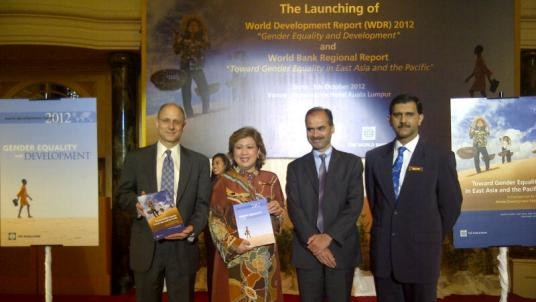Kuala Lumpur, October 8, 2012 – A new World Bank regional report shows that, while gender equality has increased across East Asia and the Pacific, disparities still exist in a number of important areas. The report, entitled “Toward Gender Equality in East Asia and the Pacific”, says improving women’s access to jobs and economic opportunity could significantly boost productivity in the region.
“Eliminating inequality of opportunity in economic participation could increase per worker productivity in some countries by as much as 25 percent. This has large implications for economic growth and poverty reduction. So, women’s economic empowerment is not only the right thing to do; it’s the smart thing to do,” notes Sudhir Shetty, Co-Director of the 2012 World Development Report on “Gender Equality and Development”.
This report is launched by YBhg. Dato’ Dr. Noorul Ainur Mohd Nur, Secretary General of the Ministry of Women, Family and Community Development. She highlighted that the theme of the World Development Report 2012 is timely as the Ernst and Young white paper released recently anticipates that women will constitute the largest emerging market in the world. In the next ten years, they will exert a strong influence in politics, business and in the civil society. As such, women’s global income is expected to grow from USD 13 trillion to USD 18 trillion in the next five years. This increment of USD 5 trillion is almost twice the growth in GDP expected from China and India combined.
The report states that promoting gender equality in economic opportunities and in voice in society promotes better development outcomes, including higher productivity, increased growth and faster poverty reduction. Although female labor force participation is generally high in East Asia and the Pacific compared to other developing regions, progress has been uneven.
“The East Asia and Pacific region is vast and diverse, with large differences in economic and social progress – including toward gender equality. In some ways, women in the region are better positioned today than ever before to participate in, contribute to, and benefit from development, but much more needs to be done,” says Andrew Mason, the report’s lead author.
YBhg. Dato’ Dr. Noorul Ainur Mohd Nur hoped that the relevant stakeholders will fully utilise the report to ensure strategies and initiatives geared towards gender equality in Malaysia are on par with the international standards.


